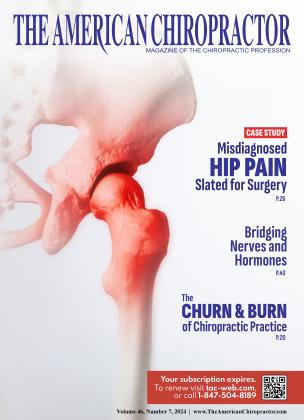Can Laser Therapy Be a Powerful Therapeutic to Relieve Substance Abuse Disorders?
by Dr. Ryan Novak, DC
The rate of substance abuse disorders (SUD), especially polysubstance abuse disorders, has increased in recent years.
Data collected from the National Health Interview Survey (NHIS) in 2020 and from the National Survey on Drug Use and Health (NSDUH) in 2021 revealed that over 20% of the U.S. population received mental health treatment and 16% of the population had a SUD in the 12 months before the taking the survey.
Even though no laser or photobiomodulation therapy devices are FDA-approved to treat any type of SUD, a good amount of evidence points to its possible future clinical use as a SUD therapeutic.
In an older study published in 2004 in Lasers in Medical Science titled “Use of Low-Energy Laser as Adjunct Treatment of Alcohol Addiction,” the neck and auricular acupuncture points were treated with laser therapy. Results showed an improvement with depression and an increase in beta-endorphin levels, which is usually deficient for those who abuse alcohol and increases with the consumption of alcohol.
In 2021, a randomized controlled trial was conducted and published in the Sultan Qaboos University Medical Journal titled “Efficacy of Laser Auricular Acupuncture for Smoking Cessation.” Five points were stimulated on each ear with a point probe for one minute each. The five points were “Shen Men,” “autonomic,” “kidney,” “liver,” and “lung.” The course of treatment was over a 14-day period with four 10-minute treatment sessions done on day one, three, seven, and 14. The trial concluded that laser auricular acupuncture can reduce nicotine dependence.
In another randomized controlled trial published in 2021 in Frontiers in Psychiatry titled “An Effective and Safe Novel Treatment of Opioid Use Disorder: Unilateral Transcranial Photobiomodulation,” the trial concluded that delivering 2.1J/cm2 of infrared light energy twice weekly to the dura through a specific site on the forehead corresponding to an EEG site over the more mature brain hemisphere significantly reduced opioid cravings for each participant.
Laser or photobiomodulation therapy is a very safe and effective modality when implemented correctly and is proving to be a powerful adjunct treatment or even a stand-alone treatment for SUD worldwide.
About the Author
Dr. Ryan Novak is the chief scientific officer (CSO) for a photobiomodulation therapy device manufacturing firm, which has developed FDA-compliant devices such as the PainBuster Super Pulsed Laser.
Phone: 877-799-7477 Website: PainBusterPro.com
 View Full Issue
View Full Issue






